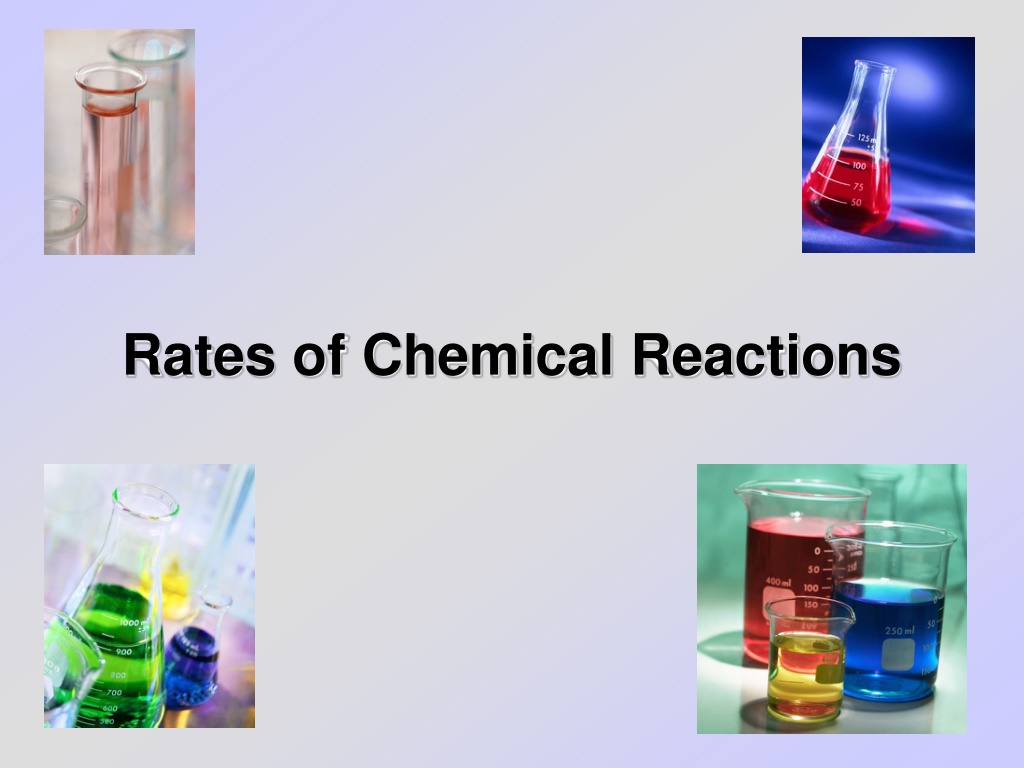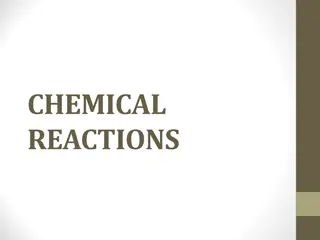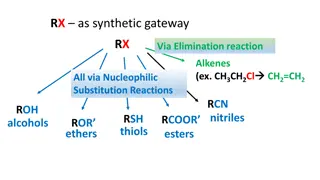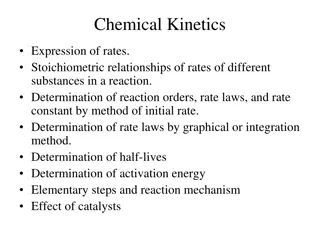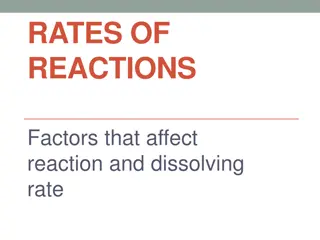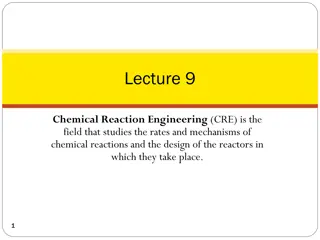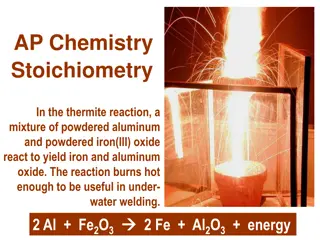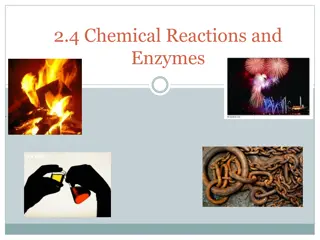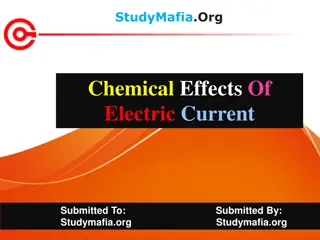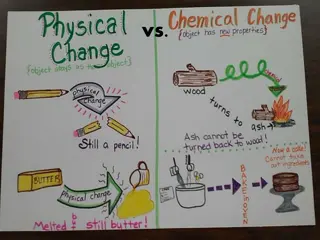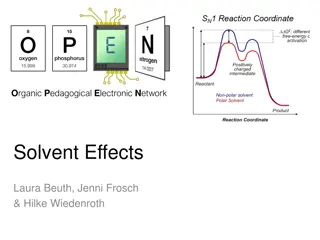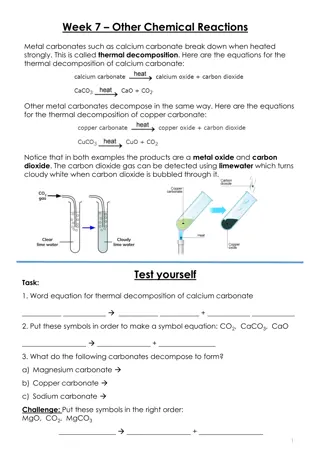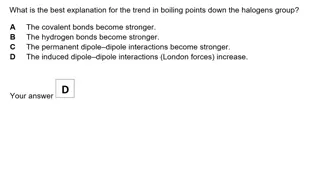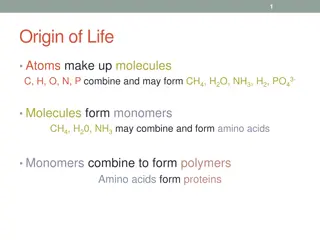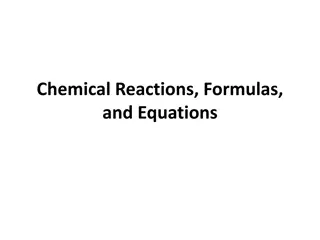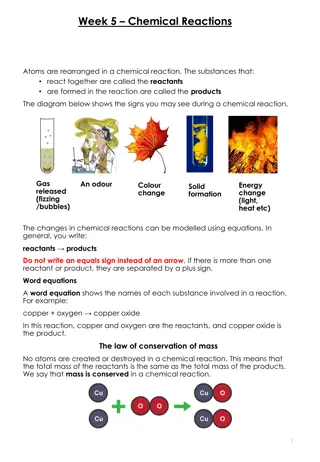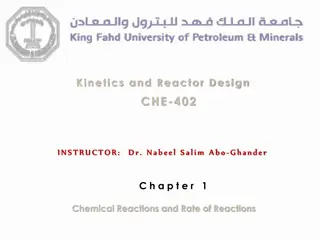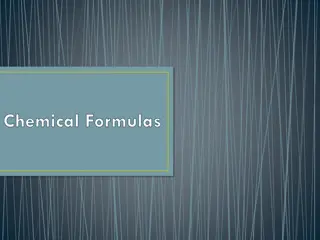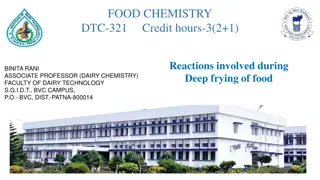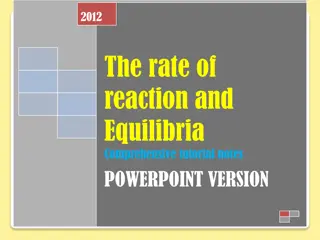Understanding Rates of Chemical Reactions: Factors and Effects
Rates of chemical reactions are determined by the Collision Theory, which explains how reaction rates are influenced by factors such as concentration, surface area, temperature, catalysts, and stirring. Increasing concentrations, surface area, and temperature generally lead to faster reaction rates, while catalysts and stirring also play crucial roles in accelerating reactions. This understanding is essential for controlling and optimizing chemical reactions in various applications.
Download Presentation

Please find below an Image/Link to download the presentation.
The content on the website is provided AS IS for your information and personal use only. It may not be sold, licensed, or shared on other websites without obtaining consent from the author. Download presentation by click this link. If you encounter any issues during the download, it is possible that the publisher has removed the file from their server.
E N D
Presentation Transcript
Reaction Rate Kinetics is the study of reaction rates. Reaction Rate Rate at which reactants change into products over time. Reaction rates tell you how fast a reaction is going. In other words, - how fast the reactants are being consumed - how fast the products are being formed - How fast energy is being absorbed or released
Rates of Chemical Reactions The Collision Theory relates particle collisions to reaction rate. Rate depends on how often particles collide with one another. The greater the number of collisions, the higher the reaction rate or the less number of collisions, the lower the reaction rate. The rate of reaction is affected by Five factors: concentration, surface area, temperature, catalysts, and stirring
Concentration Slower Rate Faster Rate Concentration is the measure of the amount of substance in a given unit of volume. The more reacting particles that are present in a given volume, the more opportunities there are for collisions and distance between reactant particles decreases so they collide more often.
Surface Area Same # of Atoms /Mass Slower Rate Faster Rate Increase in surface area increases the exposure of the particles of the reactants to one another. The greater this exposure, the more collisions there are that involve reacting particles. More collisions causes the rate to increase.
Temperature Faster Rate Slower Rate Increasing the temperature of a substance causes the particles to move faster. Particles that move faster are more likely to collide and react. More collisions causes the rate to increase.
Catalysts Catalyst is a substance that usually increases the rate of reaction but is not itself changed by the reaction. Increases the rate by lowering the activation energy needed to break the bonds to start a chemical reaction.
Stirring Increases the exposure of the reactants to each other. This causes the collisions between the particles of the reactants to happen more often causing an increase in the reaction rate.
